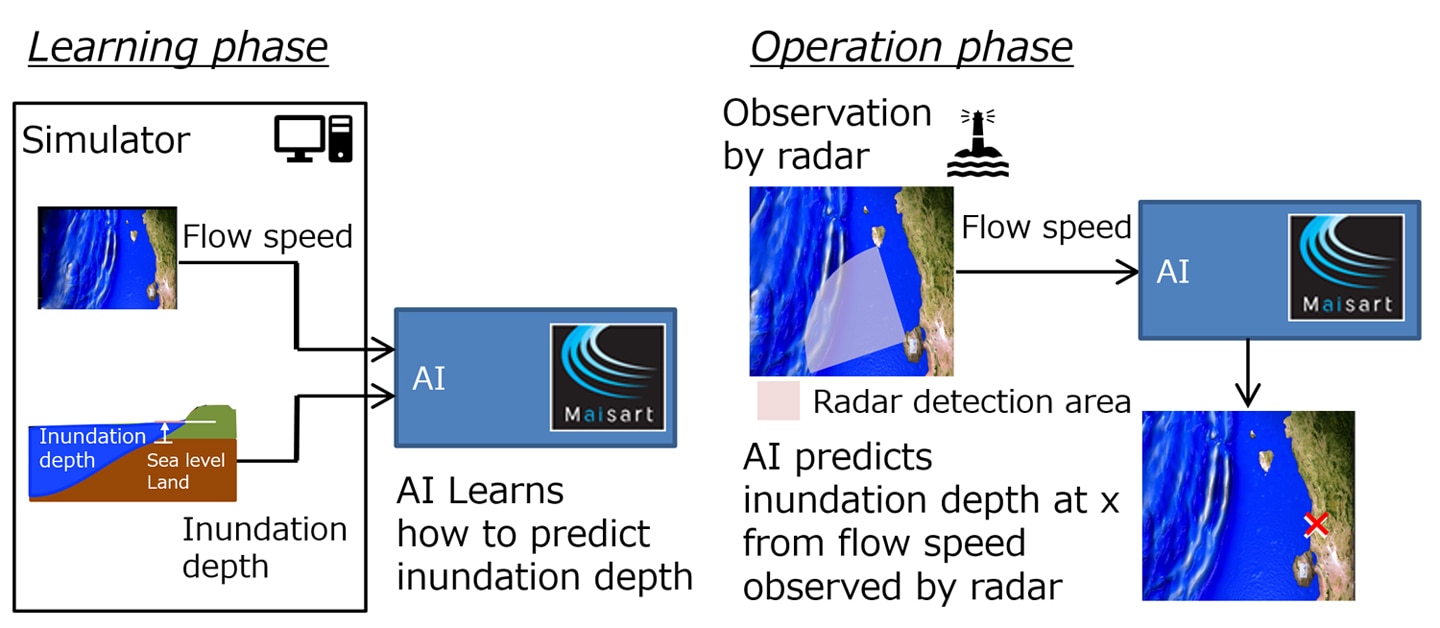TOKYO, February 4, 2021 – Mitsubishi Electric Corporation (TOKYO: 6503) announced today that the company has developed an artificial intelligence (AI) technology that uses data on a tsunami’s velocity detected by radar to forecast water inundation depths1 in surrounding inland areas, working in collaboration with the Society for the Promotion of Construction Engineering of the General Incorporated Foundation. The AI incorporates Mitsubishi Electric’s Maisart®2 AI technology to generate highly accurate predictions just seconds after a tsunami is detected, thereby supporting the rapid formulation of evacuation plans to prevent or mitigate disasters in local inland areas.
- 1Height of water level measured from the ground
- 2Mitsubishi Electric’s AI creates the State-of-the- ART in technology


Learning and operation phases of radar-based AI for tsunami inundation depth prediction
Key Features
- Maisart predicts inundation depth with high accuracy immediately after tsunami is detected
- AI learns the relationship between tsunami speed and inundation depths using simulations of various earthquake epicenters, degree and direction of fault displacements, and so on.
- The AI accurately predicts inundation depths with a margin of error of about 1 meter.3 The prediction is performed as soon as the tsunami’s speed and direction are detected with radar.
- Rapid prediction supports fast evacuation planning, helping to prevent or mitigate disasters.
- 3Results of simulation evaluations using various test environments simulating possible earthquakes in the Nankai Trough
Comparison of new and conventional methods
| Inundation prediction method | Performance | |
| New technology | AI learns from simulations to predict inundation depths based on tsunami velocity data | Predictions with 1m error margin within few seconds |
| Conventional methods | Predictions are performed based on simulation data without AI processing/analysis | Predictions with around 3m error margin within few minutes |











